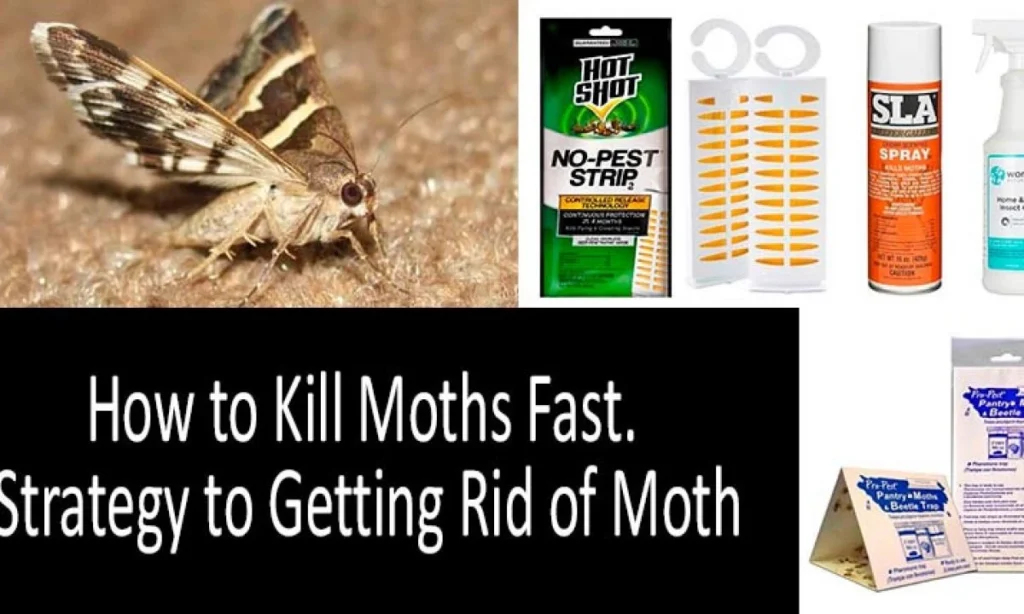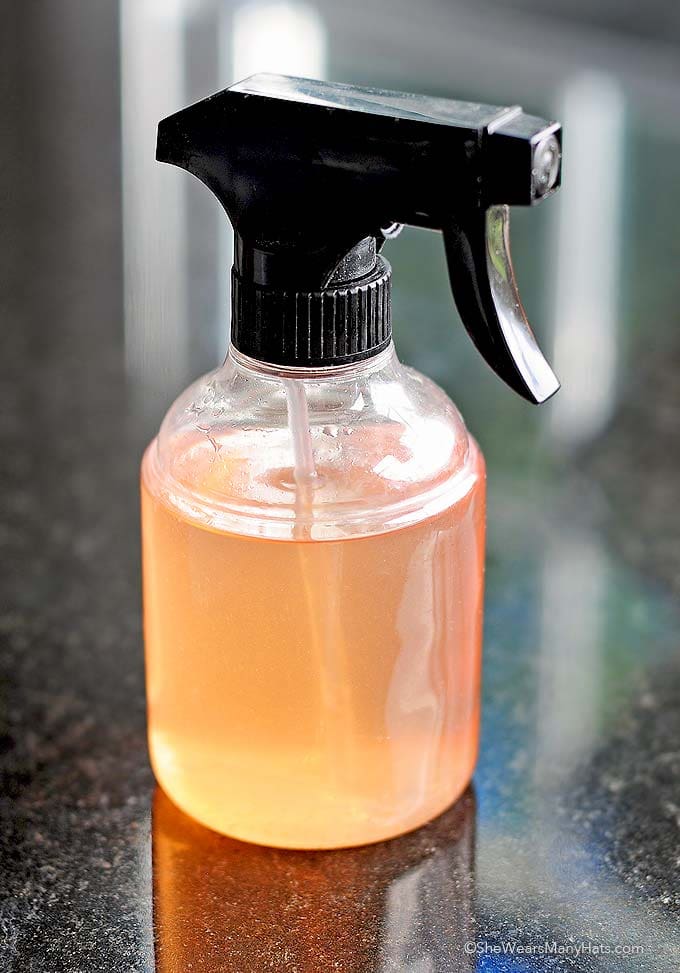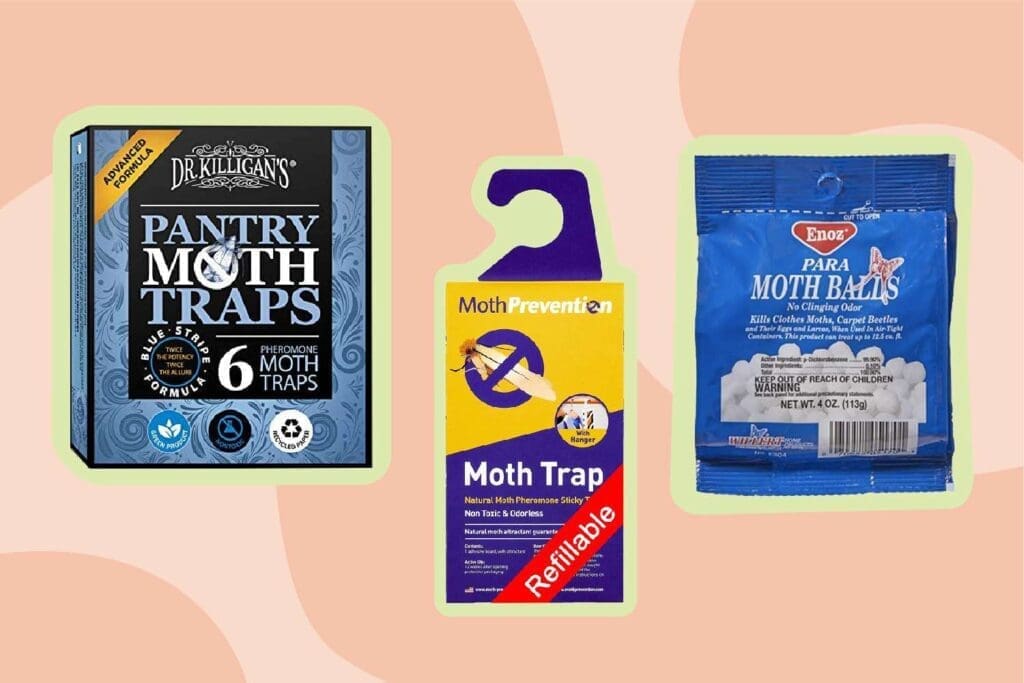Are you tired of dealing with pesky moths in your home? Look no further! In this article, we will explore natural solutions for moth control that you can easily implement in your own home. Say goodbye to those unwanted guests and hello to a moth-free living space. Whether it’s using essential oils, creating homemade traps, or implementing preventive measures, we’ve got you covered. Get ready to reclaim your home from these winged intruders with these effective and eco-friendly methods.

Identifying Moth Infestation
Moth infestations can be a frustrating problem to deal with in your home. The first step in tackling this issue is to identify the signs of a moth infestation. Keep an eye out for these telltale signs:
Signs of moth infestation
- Visible moths: If you start noticing small, flying insects in your home, especially around clothing or food storage areas, they may be moths.
- Damage to clothing: Moths are notorious for causing damage to natural fibers such as wool, silk, and cashmere. Look for holes or irregular patterns of damage on your garments.
- Silk webbing: Some types of moths spin silk webbing as they feed and move around. Look for these silky threads in dark corners or on clothing.
- Cocoon-like structures: Moth larvae create cocoons while they mature into adult moths. These cocoons can often be found hidden in the folds of clothing or in corners.
- Presence of larvae: Moths in their larval stage are often the main culprits behind damage to your belongings. Look out for small, white, worm-like larvae crawling around in your home.
Types of moths commonly found in homes
While there are many species of moths, certain types are commonly found in homes. Understanding these moths can help you better address and prevent infestations. Here are some common moths to be aware of:
- Clothes moths: Clothes moths lay their eggs on natural fibers and are particularly drawn to wool, fur, silk, and feathers. They can cause significant damage to clothing, carpets, and upholstery.
- Pantry moths: Pantry moths, also known as Indian meal moths, infest stored food products such as grains, cereals, nuts, and dried fruits. They are attracted to the scent of these items and can quickly infest your pantry if not addressed promptly.
Preventing Moth Infestation
Prevention is key when it comes to keeping moths out of your home. By taking a few simple steps, you can greatly reduce the chances of a moth infestation occurring. Here’s what you can do:
Proper food storage
Properly storing your food can go a long way in preventing pantry moth infestations. Use airtight containers for storing grains, cereals, and other susceptible food items. Regularly inspect your pantry for signs of infestation and dispose of any contaminated food immediately.
Regular house cleaning
Maintaining a clean and clutter-free home is essential for moth prevention. Vacuum your home regularly to remove any stray moth eggs or larvae. Pay special attention to areas where moths are commonly found, such as dark corners, closets, and under furniture.
Sealing cracks and crevices
Moths can easily enter your home through small cracks and crevices. Inspect your windows, doors, and walls for any openings and seal them with caulk or weatherstripping. This will help prevent moths from gaining access to your home.
Using moth-repelling scents
Moths are repelled by certain scents, so incorporating them into your home can act as a deterrent. Consider using cedar wood products, lavender sachets, or essential oils such as cedarwood, lavender, or eucalyptus. Place these items in your closets, drawers, and other storage areas to keep moths at bay.
Natural Moth Repellents
If you prefer to use natural methods to repel moths, there are several options available that are effective and chemical-free. Here are some natural repellents to consider:
Cedar wood
Cedar wood has long been known for its moth-repellent properties. You can use cedar balls, blocks, or chips to protect your clothing and linens. Place them in your closets, drawers, or storage containers to keep moths away.
Lavender
Lavender has a pleasant scent that humans enjoy but moths find repulsive. Use lavender sachets, dried lavender bouquets, or lavender essential oil to deter moths. Place them in your closets, drawers, or bedding storage areas.
Essential oils
In addition to lavender, other essential oils such as cedarwood, eucalyptus, and peppermint can help repel moths. Dilute a few drops of these oils in water and spray the mixture in your closets, drawers, and around windows and doors.
Bay leaves
Bay leaves are another effective natural moth repellent. Place bay leaves in your food storage containers, pantry shelves, or grain bags to keep pantry moths away. Replace the leaves every few months for continued effectiveness.
Cloves
Cloves have a strong scent that moths dislike. Place whole cloves in sachets or tie them in a piece of cloth and hang them in your closets or drawers. You can also sprinkle ground cloves in areas where moths are commonly found.
Moth Control with Vinegar
Vinegar is a versatile household ingredient that can also be used for moth control. It is effective in cleaning infested areas, repelling moths, and deodorizing your home. Here’s how you can use vinegar to tackle a moth infestation:
Vinegar mixture for cleaning infested areas
Create a mixture of equal parts white vinegar and water. Use this solution to clean surfaces, corners, and areas where moths and their larvae are present. The vinegar will help kill any insects and remove their pheromone trails, deterring future moths from infesting the same areas.
Vinegar-soaked cloths for hanging clothes
To protect your clothes from moths, soak a cloth in white vinegar and wring out any excess. Hang the vinegar-soaked cloth near your clothing to repel moths. This method is particularly effective in wardrobes or closets where moths commonly attack clothing.
Vinegar solution for carpet cleaning
If you suspect moths have infested your carpets or rugs, dilute vinegar with water in a 1:1 ratio and spray the solution onto the affected areas. Allow it to sit for a few minutes, then blot with a clean cloth or sponge. The vinegar will help eliminate moths and their larvae, as well as remove any odors caused by their presence.

Using Clothes Moth Traps
Clothes moth traps are an effective means of controlling moth populations in your home. They work by attracting and trapping adult male moths, preventing them from reproducing. Here’s how to use clothes moth traps:
How clothes moth traps work
Clothes moth traps contain a pheromone lure that specifically attracts male moths. The lure is generally placed on a sticky surface within the trap. Male moths are attracted to the pheromone and become trapped on the sticky surface, preventing them from mating with females.
How to place and monitor clothes moth traps
Place clothes moth traps in areas where you suspect moth activity, such as closets or storage areas. Follow the manufacturer’s instructions for proper placement. Check the traps regularly to monitor the moth population. If you notice a significant decrease in the number of trapped moths, it indicates the traps are working effectively.
Freezing and Heat Treatment
Freezing and heat treatment methods can be used to eliminate moths and their larvae from infested items. These methods are particularly useful for delicate or valuable items that cannot withstand traditional cleaning methods. Here’s how to use freezing and heat treatment for moth control:
Freezing clothes and fabrics
If you have clothing or fabrics that are infested with moth larvae, place them in sealed plastic bags and put them in the freezer for a minimum of 72 hours. The extreme cold temperature will kill any moths, eggs, or larvae present. After freezing, wash or dry clean the items to remove any dead insects or debris.
Heat treatment for infested items
Heat treatment involves exposing infested items to high temperatures to eliminate moths and larvae. This method is suitable for items that cannot be frozen, such as delicate fabrics or antique textiles. Consult a professional pest control service for guidance on the appropriate heat treatment method for your specific items.

Good Housekeeping Practices
Maintaining good housekeeping practices is crucial for controlling moth infestations. By adopting a few habits, you can significantly reduce the chances of moths taking up residence in your home. Here are some practices to incorporate:
Regular vacuuming
Regularly vacuuming your home, especially in areas prone to moth activity, such as closets and carpets, will help eliminate moth eggs and larvae. Pay attention to corners, cracks, and crevices where moths can hide.
Frequent laundering
Washing your clothes and linens regularly, particularly those made from natural fibers, will help prevent moth infestations. Moths are less attracted to clean items, so frequent laundering can act as a deterrent.
Dry cleaning infested garments
If you notice signs of moth damage on your clothing, promptly dry clean the affected items. Dry cleaning kills moth larvae and eliminates their presence on your garments.
Reducing clutter
Moths thrive in cluttered environments, as it provides hiding places and breeding grounds. Keep your home organized and declutter regularly to minimize potential moth habitats.
Natural Carpet Moth Control
Carpet moths can wreak havoc on your carpets and rugs. To combat these pests naturally, you can try the following methods:
Baking soda for carpet moth control
Sprinkling baking soda on your carpets and rugs can help deter moths. Apply a light layer of baking soda, focusing on areas with moth activity. Leave it overnight, then vacuum thoroughly to remove the baking soda and any trapped moths or larvae.
Diatomaceous earth for carpet moth control
Diatomaceous earth is a natural powder made from fossilized algae. It is safe for humans and pets but deadly to moths, as it dehydrates their bodies. Sprinkle diatomaceous earth on your carpets, brushing it in with a broom or brush. Leave it for a few hours, then vacuum it up, disposing of the contents in an outdoor trash bin.

Moth Control in Natural Fiber Clothing
If you have natural fiber clothing that has been infested with moths, you can use specific methods to salvage them:
Freezing method for natural fiber clothing
As mentioned earlier, freezing is an effective method for killing moth eggs and larvae without causing damage to delicate fabrics. Seal the infested garments in a plastic bag and place them in the freezer for a minimum of 72 hours. After freezing, gently brush off any dead insects or debris before washing or dry cleaning the clothes.
Sunlight exposure method for natural fiber clothing
Moths dislike sunlight and heat, so exposing infested clothing to direct sunlight can help eliminate them. Hang the garments in the sun for a few hours, making sure both sides receive adequate exposure. The sunlight and heat will kill any moths or larvae present.
Calling Professional Help
In some situations, professional help may be necessary to effectively control a moth infestation. Here are some instances where calling a pest control service is recommended:
When to consider professional moth control
- Severe infestation: If you have a widespread or persistent moth infestation that you cannot control on your own, it’s best to seek professional assistance. They have the expertise and tools to address severe cases effectively.
- Valuable or delicate items: If you have valuable or delicate items that require specialized care, a professional pest control service can provide guidance on the best treatment methods without causing damage.
- Recurring infestations: If you have tried various methods to control moth infestations but they keep coming back, a professional can help identify the underlying cause and implement long-term solutions.
Searching for a reliable pest control service
When choosing a pest control service, look for one that specializes in moth control and has positive customer reviews. It’s important to find a reliable and trustworthy company that offers effective, safe, and eco-friendly solutions. Research different providers, compare prices, and request quotes before making a final decision.
By following these comprehensive methods for moth control, you can effectively eliminate and prevent infestations in your home. Whether you opt for natural repellents, use vinegar for cleaning, or seek professional help, it’s crucial to take swift action to protect your belongings and maintain a moth-free environment.


I am Randy, the author behind PestControld.com. Drawing from decades of experience, I aim to provide valuable insights, expert advice, and practical recommendations to help you make informed decisions when assessing viable pest control solutions.